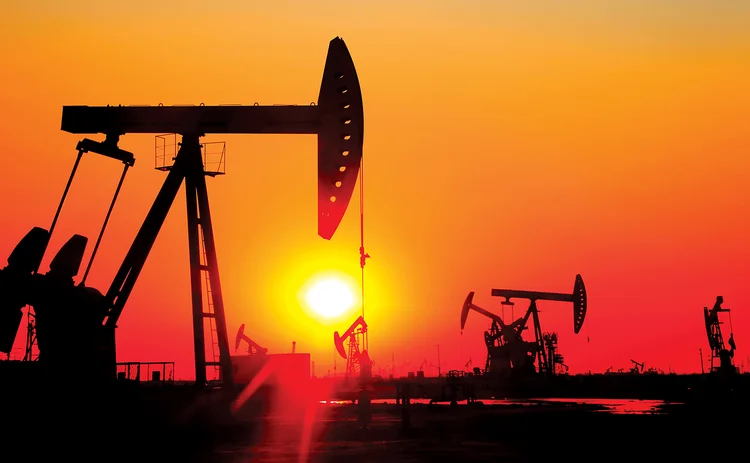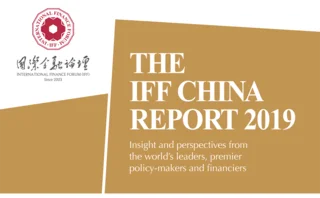
The commodity crunch – Free trade and futures
Jiang Yang, IFF vice-chairman and former vice-chairman of the China Securities Regulatory Commission, sees a a bright future in commodities trading and China’s ability to adapt to a wide-open futures market


Since its acceptance into the World Trade Organization in 2001 and its integration into the global market, China has benefited from and contributed to global free trade. Over the past 40 years – during which time the country has strived to reform and ‘open up’ – China’s import and export volume of goods has grown from US$20.6 billion in 1978 to more than $4 trillion in 2017. China’s share of world economic output has risen from 1.8% to 15.1% over the same period and is the world’s second-largest economy; as such, it is arguably the engine for the world’s growth.
Trade in commodities has bolstered China’s growth domestically and internationally. Bulk imports – such as iron ore, crude oil, soybeans and copper – have fuelled China’s economic momentum, improved the living standards of the Chinese people, expanded employment, increased consumption and improved the wellbeing of many other countries.

Free trade of bulk commodities has enabled economies to benefit from others’ resources, resulting in win-win scenarios. China’s economy has burgeoned as the global economy has prospered. Between 2001 and 2010, China’s contribution to global growth was 14.2%; in 2017 it rose to 33%. Along with other emerging economies, China has played a critical role in defining the next chapter of globalisation – in which countries must work together for global prosperity.
However, volatility in commodities prices in recent years has caused crude oil prices to fluctuate sharply, with Brent oil futures falling by 31% from over $80 per barrel to $50 within a month at the end of last year. The fall in prices can be attributed to
political factors, supply and demand, and the strength of the US dollar. What is concerning is the critical role of commodities in sustaining global growth and economic stability of certain nations – either as exporters or importers.
Black gold
One of the most valuable commodities, with a strong influence over China’s economic stability, is crude oil, on which more than 500 petroleum products and over 1,500 different industries are reliant. It powers the entire petroleum industry, valued at CNY4.04 trillion. In the same year, consumer goods refined by China’s crude oil totalled 551 million tons, of which more than 400 million – about 70% – came from nations along the route of the Belt and Road Initiative (BRI).
Economising on commodities
Products derived from iron ore, from tools to aviation equipment, are today a major contributor to global growth. In 2017, China imported 1 billion tons of iron ore; industries were unable to sell the amount they were manufacturing. Iron ore price rose from less than $30 to $150 per tonne, while steel grew from $296 per tonne to $652 between 2002 and 2010. China imported 65% of iron ore from the international market, yet domestic steel companies yielded relatively low profit margins due to a lack of pricing power.
Domestic steel mills managed to earn a small profit after iron ore futures were listed on the Dalian Commodity Exchange in October 2013. Profits per tonne increased from $40 in 2011 to $126 in 2017, saving about $10 billion across the entire industry.
China imported 97 million tons of soybeans in 2017, mainly from the US and South America. In addition to the direct consumption of soybean oil, most soybeans were used as fuel for the agricultural sector. China also imports a large amount of palm oil from Southeast Asian countries along the BRI. The importing and exporting countries of these commodities frequently capitalise on the futures market to manage price risks and maintain economic safety.
Importance of futures
The fluctuation of these commodity prices has a significant impact on business operations and national economic security. More than a century ago, the US and the UK – with the help of the futures market – mitigated or offset the impact of price volatility, proving that the futures market takes an indispensable role in stabilising commodity prices.
Trading commodities in foreign financial markets is generally referred to as futures trading – contracts for assets bought at an agreed price, but delivered and paid for later. The trading partners sign a commodity spot contract, which must be delivered – with a small margin – to control the risks of market price changes during the production cycle. Both parties shall honour their commitments as per the contract price at a predetermined date regardless of fluctuation. The financial trader closes the position and exits the trade before the delivery date.
Yegor Gaidar, economist and former acting prime minister of Russia, believes the economic disintegration of the Soviet Union was caused by a fall in international oil prices. In his view, it is important for the governments of resource-rich countries to know beforehand what to do in the face of falling prices. Each government should anticipate its impact on the budget, balance of payments, consumer market, external debt repayments and stability of the banking system, while at the same time offering a detailed and practical action plan that can be practised in similar situations.
Crude oil made up the lion’s share of income for the Soviet Union at the time, negatively impacting the country’s budget and social living. The US and some of its allies sold much of their reserves in the crude oil futures market, pulling down the price of futures, yet the Soviet Union was hampered by politics and unable to follow. For crude oil exporters, no matter how many resources are exported, if the price falls so do the profits. The same goes for importers: a sum of money allows you to buy less oil if the price rises.
Large economies should therefore establish their own futures markets. Nobel laureate Milton Friedman of the Chicago School of Economics strongly supported the creation of the foreign exchange futures market on the Chicago Mercantile Exchange (CME). But while it is in the strategic interest of large economies to establish such infrastructure, smaller economies would find it impractical due to the high costs, limited space and ability to manage.
The commodity futures markets established by the US and UK more than 100 years ago are not just for domestic use. The CME – the most influential futures market in the world – is the international pricing centre of crude oil, agricultural products, gold and other bulk commodities. Many global economies, enterprises and investors trade in the US futures market and hedge out risks. The London Metal Exchange has a similar function, with the world’s non-ferrous metals companies using its benchmark price to manage risks. Intercontinental Exchange in the US also functions as a global pricing and risk management institution with similar energy pricing and risk management.
China also has a futures market. It was established 30 years ago, is the largest in Asia and has ranked among the top performers in the global commodity futures market for nine consecutive years. However, Japan has a greater international influence than its larger neighbour. Rubber futures, for example, are traded dozens of times more on the Shanghai Futures Exchange than in Japan, yet the benchmark for international natural rubber trading is set in Japan, not China.
One of the main reasons for this is China has not opened its rubber futures market. International investors are unable to operate within the Chinese market, and relevant information on trading in international commodities is not directly and fully reflected in the price system in the futures market there. Countries and companies that buy and sell commodities will only be able to use the price found as a benchmark for negotiations when the price system shows the needs of all parties, and stores all the information as data.
China’s futures market is gradually opening up to foreign investors, with Shanghai crude oil futures listed in March 2018. One of the biggest changes in the market since then is the Arabian American Oil Company’s (Aramco’s) changes to its 40-year-old pricing mechanism. Aramco used Oman crude oil futures, listed on the Dubai Commodity Exchange, as a benchmark, but used the Brent or Platts benchmark with Asian customers. According to industry analysts, this was because of supply. Within nine months of Shanghai crude oil futures’ listing, its trading volume exceeded that of Oman crude oil futures by more than a dozen times, becoming the world’s third-largest futures market. China could gradually replace the benchmark of Oman crude oil pricing with Shanghai crude oil futures for customers trading in Asia.
The market is maturing, and with daily and monthly trading volumes increasing more and more, international investors are equally likely to participate in the market.
Only users who have a paid subscription or are part of a corporate subscription are able to print or copy content.
To access these options, along with all other subscription benefits, please contact info@centralbanking.com or view our subscription options here: subscriptions.centralbanking.com/subscribe
You are currently unable to print this content. Please contact info@centralbanking.com to find out more.
You are currently unable to copy this content. Please contact info@centralbanking.com to find out more.
Copyright Infopro Digital Limited. All rights reserved.
As outlined in our terms and conditions, https://www.infopro-digital.com/terms-and-conditions/subscriptions/ (point 2.4), printing is limited to a single copy.
If you would like to purchase additional rights please email info@centralbanking.com test test test
Copyright Infopro Digital Limited. All rights reserved.
You may share this content using our article tools. As outlined in our terms and conditions, https://www.infopro-digital.com/terms-and-conditions/subscriptions/ (clause 2.4), an Authorised User may only make one copy of the materials for their own personal use. You must also comply with the restrictions in clause 2.5.
If you would like to purchase additional rights please email info@centralbanking.com test test test







